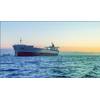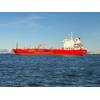The story has been removed
Sorry for inconvenience
 Outcomes of the Marine Environment Protection Committee (MEPC 83)
Outcomes of the Marine Environment Protection Committee (MEPC 83)
 Caribe Tankers to Trial Inmarsat NexusWave Connectivity Service
Caribe Tankers to Trial Inmarsat NexusWave Connectivity Service
 Saltchuk Chairman Tabbutt Prioritizes Workforce Development
Saltchuk Chairman Tabbutt Prioritizes Workforce Development
 Veson Nautical: Orders For Dry-Bulk Vessels Falldry b by 26% Y-o-Y in Q1
Veson Nautical: Orders For Dry-Bulk Vessels Falldry b by 26% Y-o-Y in Q1
 Danelec, Aage Hempel Strengthen Global Partnership
Danelec, Aage Hempel Strengthen Global Partnership









